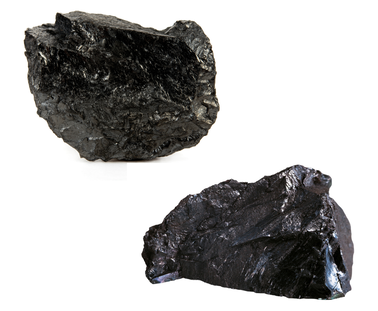|
Anthracite is the highest rank of coal. It's also known as hard coal, is a hard, compact variety of coal with a submetallic brightness. Another feature that distinguishes Anthracite from other coals is that this type of coal is considered a metamorphic rock. Anthracite has the highest carbon content, least impurities, and highest energy density among all coal varieties and is the highest coal ranking. It is the most fragile of the charcoal types, producing a scorching blue flame when burned. The low sulfur content in Anthracite makes it an extremely clean-burning fuel. Therefore, it is the most environmentally friendly type of coal among coal types. Brief History Of Anthracite Coal Anthracite was formed during the Carboniferous Age when the dense green vegetation that thrived during the tropical climate of the time fossilized. Anthracite is a type of organic coal formed by the fossilization of green vegetation growing in a tropical environment in the Carboniferous Age. Anthracite derives from the Greek word anthrakítēs, which is "like coal". Anthracite has been providing even, using in locomotive trains, industrial buildings, houses throughout the world for nearly 200 years. In the past, Anthracite was also used in homes for reasons such as low dust and smoke emission, slow and prolonged burning, and high heating capacity. Today, there are alternatives such as natural gas, and its price is high due to decreasing interactive reserves. Today, anthracite reserves are limited, and their small amount has led to the use of this high-capacity coal type for more industrial purposes. In the past, Anthracite was also used in homes for reasons such as low dust and smoke emission, slow and prolonged burning, and high heating capacity. Nowadays, there are alternatives such as natural gas, and its price is high due to decreasing interactive reserves. New technology and engineering design changes to burners have made it even easier to use. Anthracite coal does not leave creosote residue in the chimney. In this way, it does not cause a fire hazard like cordwood and pellet-burning stoves. How Anthracite Occurs As the temperature of the ground increases, organic matter called peat turns into lignite, hard coal, Anthracite, respectively, and graphite if suitable conditions occur. This transformation process is called carbonization. If the carbon content is 60%, it is called peat, 70% is lignite, 80-90% is hard coal, and 95% is Anthracite. Anthracite is the purest form of coal, in which the carbon content is between 86% and 98%. It's divided into subspecies according to the ratio and structure of carbon content. These; semi-anthracite, anthracite, and meta-anthracite. Anthracite is coal, which is found in minimal amounts in nature, is the type of coal with the highest heat quality when compared to other coal types. Only %5 of the world's total coal is Anthracite. South Africa, the USA, China, Russia, Ukraine, North Korea, Vietnam, UK, Australia, and Canada are the countries where Anthracite is mined. Anthracite Coal Heating Value Anthracite is the type of coal with the highest energy release, ie, heat value, among coal types (about 900 degrees or higher). It produces more than 100 thousand joules of energy per kilogram.
2 Comments
|
Archives
May 2024
Categories |


 RSS Feed
RSS Feed